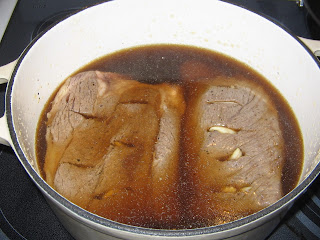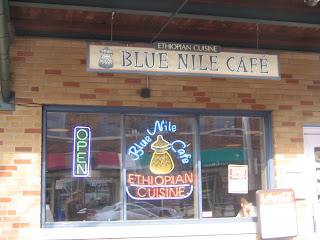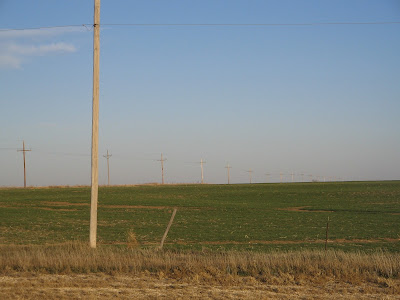I posted last month about
My Pet Wolves. My dogs didn't always eat a raw diet, they used to eat kibble. And I'm aware that not everyone is wants to or is able to feed a raw diet to their dogs. So this post is about what I looked for when I fed my dogs "dog food".
Higher quality food may seem more expensive at first, but it evens out. The higher quality the food, the less fillers eaten (and therefore the less poop comes out the other end). Your dog eats more to try to get the nutrition it needs, and most of the food just passes right on through. Also, it will make your animals healthier, so you save money on vet bills in the long run.
And sometimes, the higher quality foods are actually cheaper. For example, CostCo's brand Kirkland is actually better dog food than Science Diet or Eukanuba!
Remember: There is no single food that is "best". The goal is to find high quality food(s) that
your dog does well on.
Here's a short list of rules I came up with for choosing dog kibble:
- High meat content.
This is first and foremost. Dogs are carnivores, carnivores eat meat.
Preferably at least 2-3 out of the top 5 ingredients be meat or meat meal (first ingredient must be!). Don't confuse "meal" with "byproducts". Meal is simply the meat with the water weight removed. So for example, on the ingredient list, "chicken meal" is actually more quantity of chicken than "chicken".
A dog should never be on a vegan diet. And the only time a vegetarian diet should be considered is if the dog has severe allergies and all normal and exotic protein options have been exhausted. Most kibbles are chicken, lamb, duck, or beef; but you can find exotic proteins like pheasant and kangaroo as well. Also worthy of mention is that there is a different between cooked and raw proteins, if your dog has allergies to a cooked/processed meat, it may not have a reaction to the same protein as raw meat.
- Higher quality grains, such as barley, brown rice, and oatmeal. No wheat or corn.
Or an alternative starch/carbohydrate such as potatoes, sweet potatoes, or tapioca.
Dogs have absolutely no need for carbs and starches. The reason these things are included in dog kibble is because a starch is required to have "kibble", it holds the pieces of food together, else it would be "crumbles".
- No byproducts.
While there is nothing inherently wrong with dogs eating the things included in "by products" (organs, bones, feet, etc), the problem is that the term "byproducts" is a catch-all. You have no idea exactly what the byproducts are.
- Minimal fillers.
Fillers are things like brewers rice, beet pulp, etc.; used to bulk up the food but add no benefit to either the dog's health or the manufacturing process.
- No carcinogenic preservatives (BHA, BHT, ethoxyquin).
- No artificial colorings such as the Red, Blue, and Yellow dyes.
Your dog doesn't care what color the food is, dyes are only added to make it look pleasing to the human buying it. And dyes have been linked to hyperactivity and health problems.
- No added sugars (sugar, corn syrup).
Dogs don't need these. These are only included to make crappy food more palatable to the dog.
- No mystery meats (meats identified only as "meat" or "poultry".)
Your dogs' food should always tell you exactly what type of meat you are feeding.
Dog Food Analysis has reviews on many different types of dog food, and the ratings are pretty much in-line with the rules I listed above. I recommend sticking to the 4, 5, and 6 star foods.
And good site to research dog food ingredients is
Dog Food Project.
Stay away from grocery stores brands. They are low-quality foods chalk full of fillers, preservatives, dyes, etc.. (Grocery store foods are those like Beneful, Old Roy, Kibbles'n'Bits Alpo, Pedigree, etc.)
Also beware "premium" foods. "Premium" does not mean good nutritionally, and is not a nutritionally high quality food. It has the same types of ingredients as grocery store foods, just a bit better quality of those not-so-good ingredients. (Premium foods are those like Iams, Eukanuba, Science Diet, etc..)
Another thing to be wary of: A lot of vets will recommend what they sell in their office. They get profit from the brands they keep on their shelves, that's why they push it. Truth is, vet schools don't focus a lot on nutrition.
I'm NOT saying that a vet is a bad vet because he/she recommends those foods, a lot of vets just are told "this is good food", so they pass the message along without proper nutrition knowledge. Vets are busy people! And required to deal with so many issues and so many different species! Also, some dog food brands (like Hills) support vet schools, so vets have heard of it from the time they start college, which makes them think it's good as well. Here is a quote from Hill's (makers of Science Diet) website: "Hill's scientists author more than 50 research papers and textbook chapters each year and teach at leading schools of veterinary medicine."
And don't be taken in by breed-specific foods. It's just a marketing tool. Very few breeds require different diets than the average dog. (Dalmatians come to mind, and you don't need "dalmation food" for them, you just need to know what to look for in foods that work best for a breed with specific requirements.) But in the vast majority of cases, it's pointless. And typically the brands marketing breed-specific foods are selling lower-quality foods. A chihuahua can eat the same food as a boxer, and they can both eat the same food as a cocker spaniel, a poodle, and a golden retriever.
Petco and Petsmart are slowly starting to get some of the better quality foods, but your best bets for finding quality dog food are:
- small, locally owned petstores
- dog boutiques
- farm supply stores
And remember, when you switch your dog's "dog food", do it slowly. A dog's digestive flora get used to digesting only one type of food day after day after day that the gut flora needs time to adjust. Only switch about 25% at a time and feed that for a few days. If there are no issues (vomiting, loose stools, excess gas, etc) then increase another 25%. And so on. And remember, not every dog does well on every food, so if you are still having issues a couple weeks into trying to switch, that food simply may not agree with your dog.
I do not subscribe to the "feed a dog the same food until it dies" method; that is propagated by dog food companies so you'll stick with their brand and their brand only. There are also benefits to rotating a dog's food. It reduces the risk of allergies developing, and it also keeps the you on the up-and-up when formulas are changed or there are recalls. Variety is the spice of life!
Do your research, be confident in your decision, and read the back of the bag not the front!




















 , a Christmas present from my sister this year (she sent it a little early, so I opened it!). :-)
, a Christmas present from my sister this year (she sent it a little early, so I opened it!). :-)



























